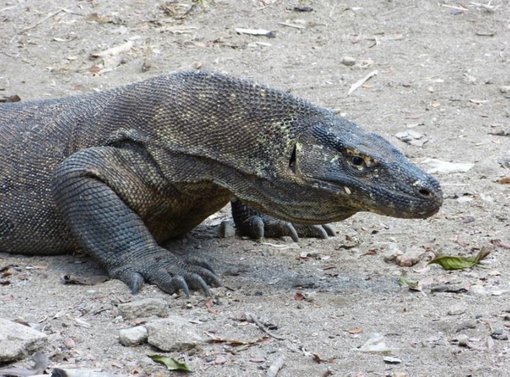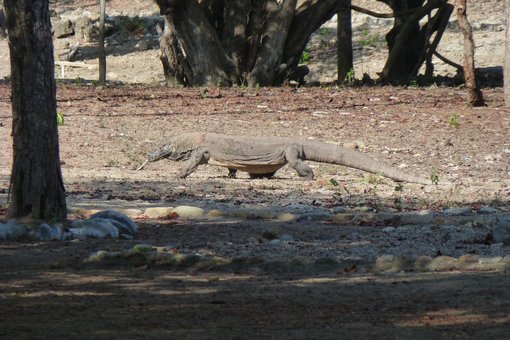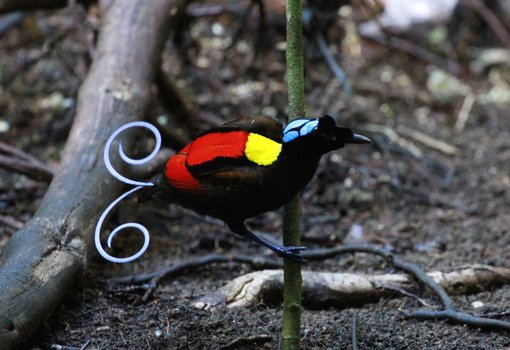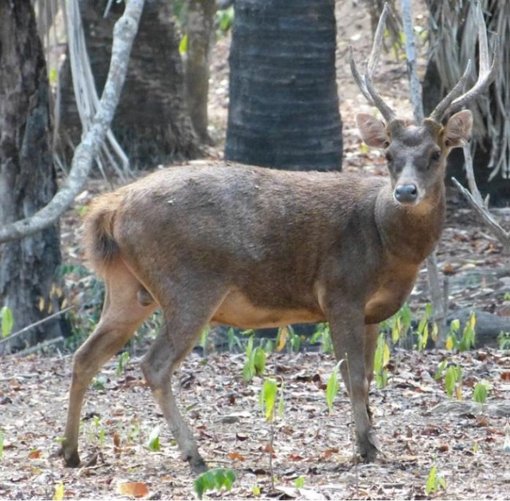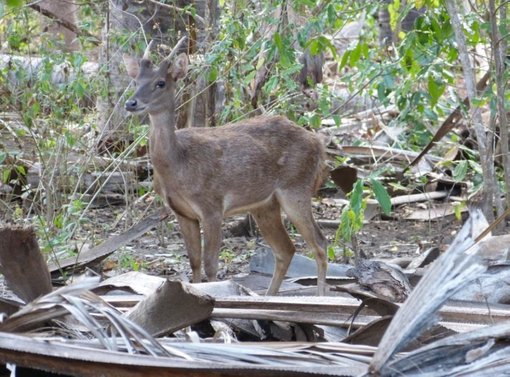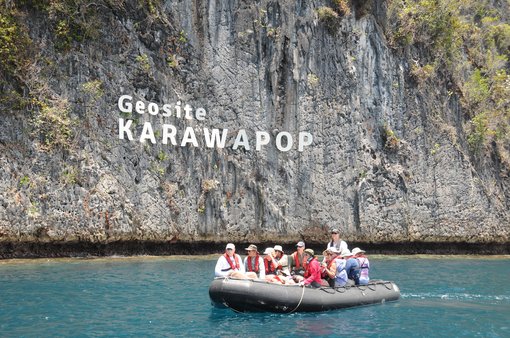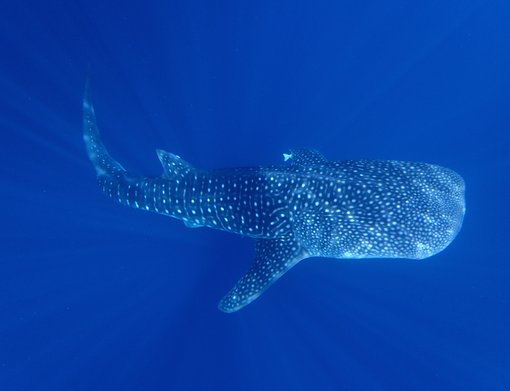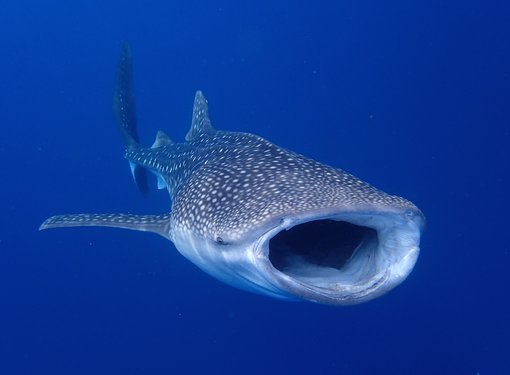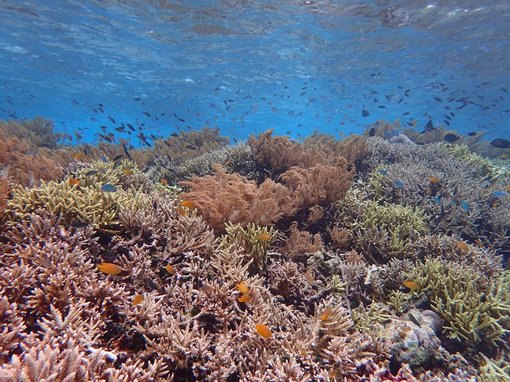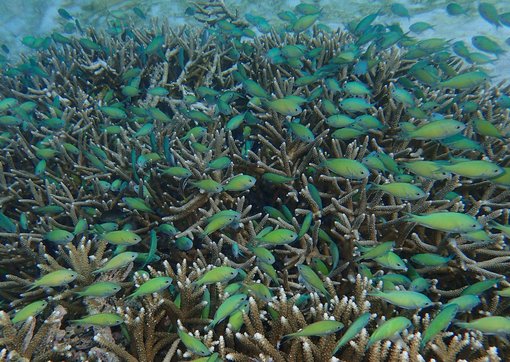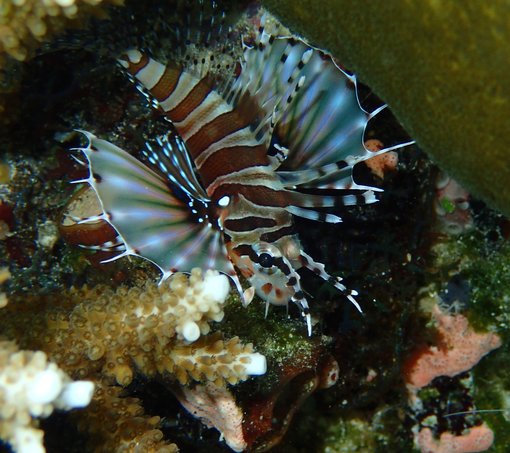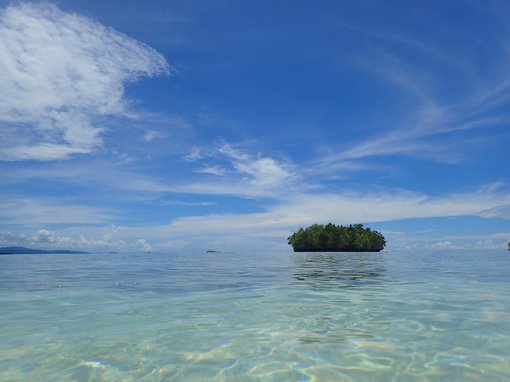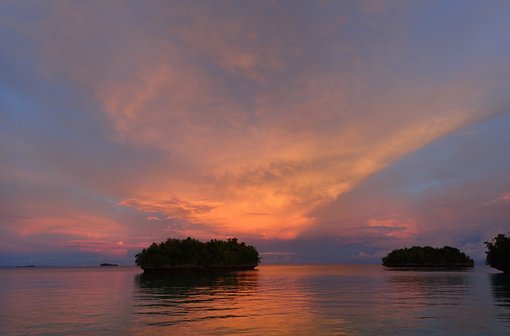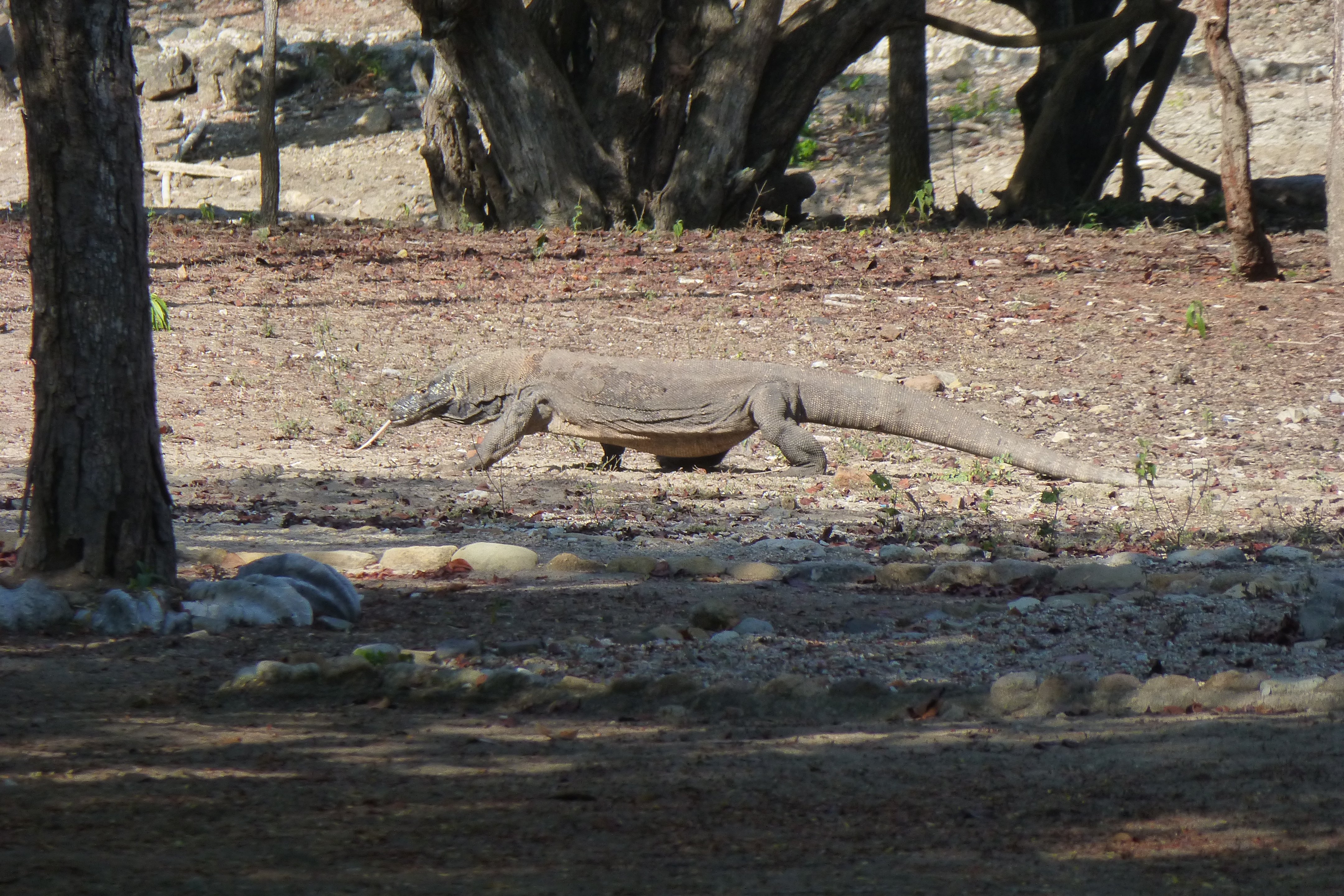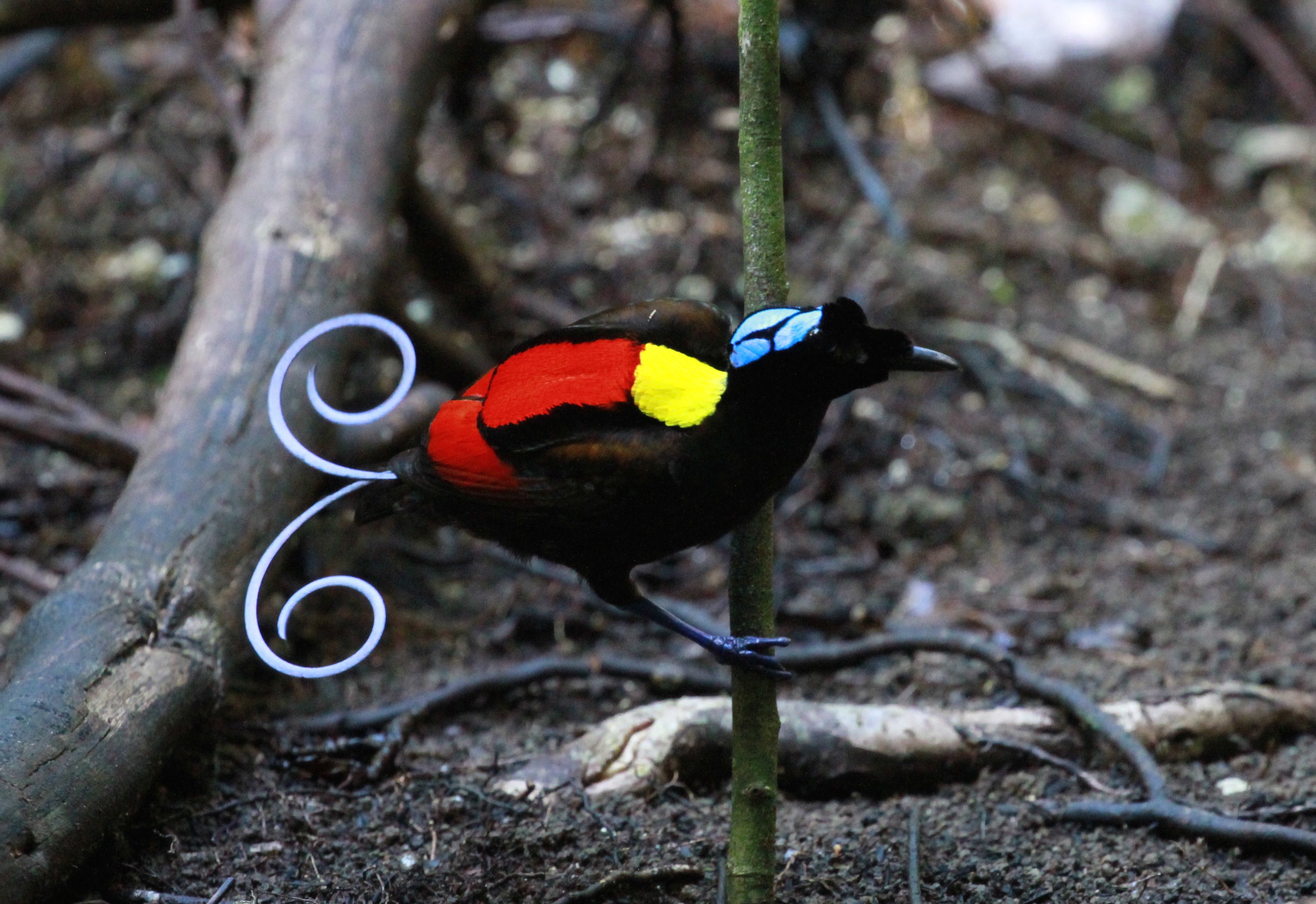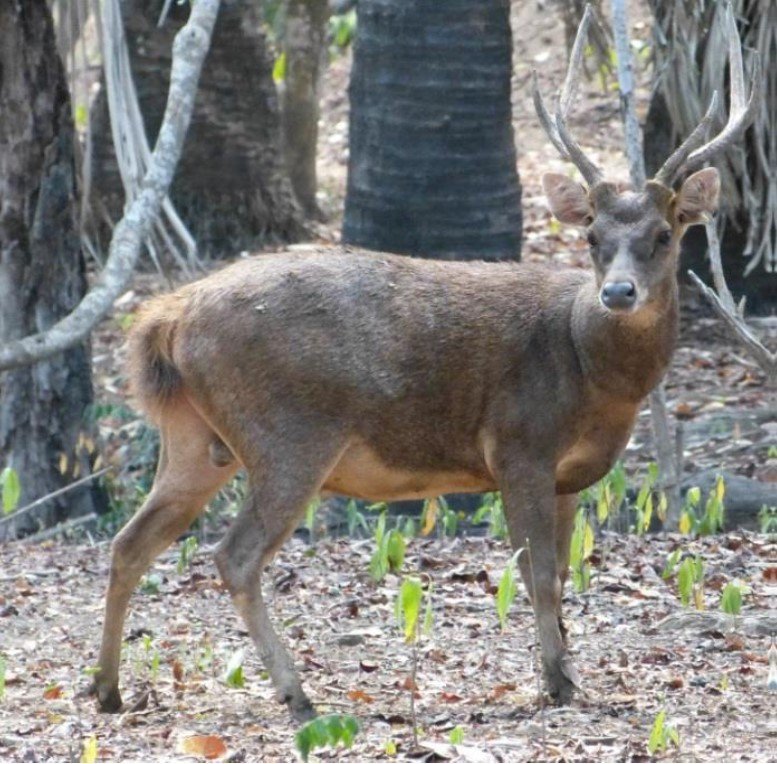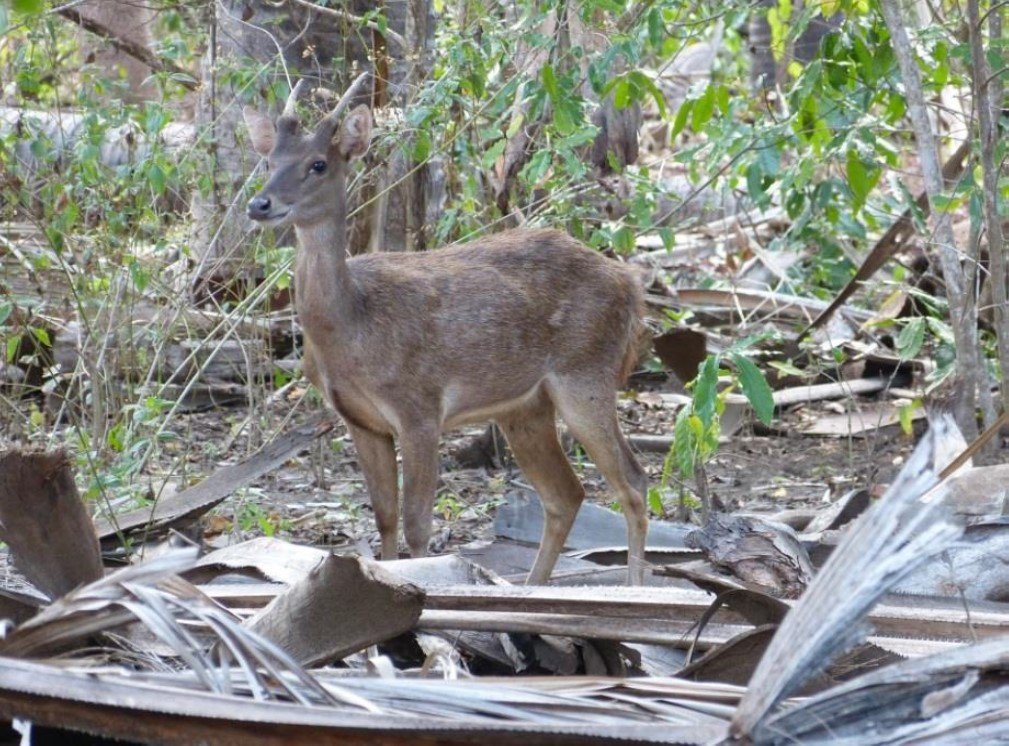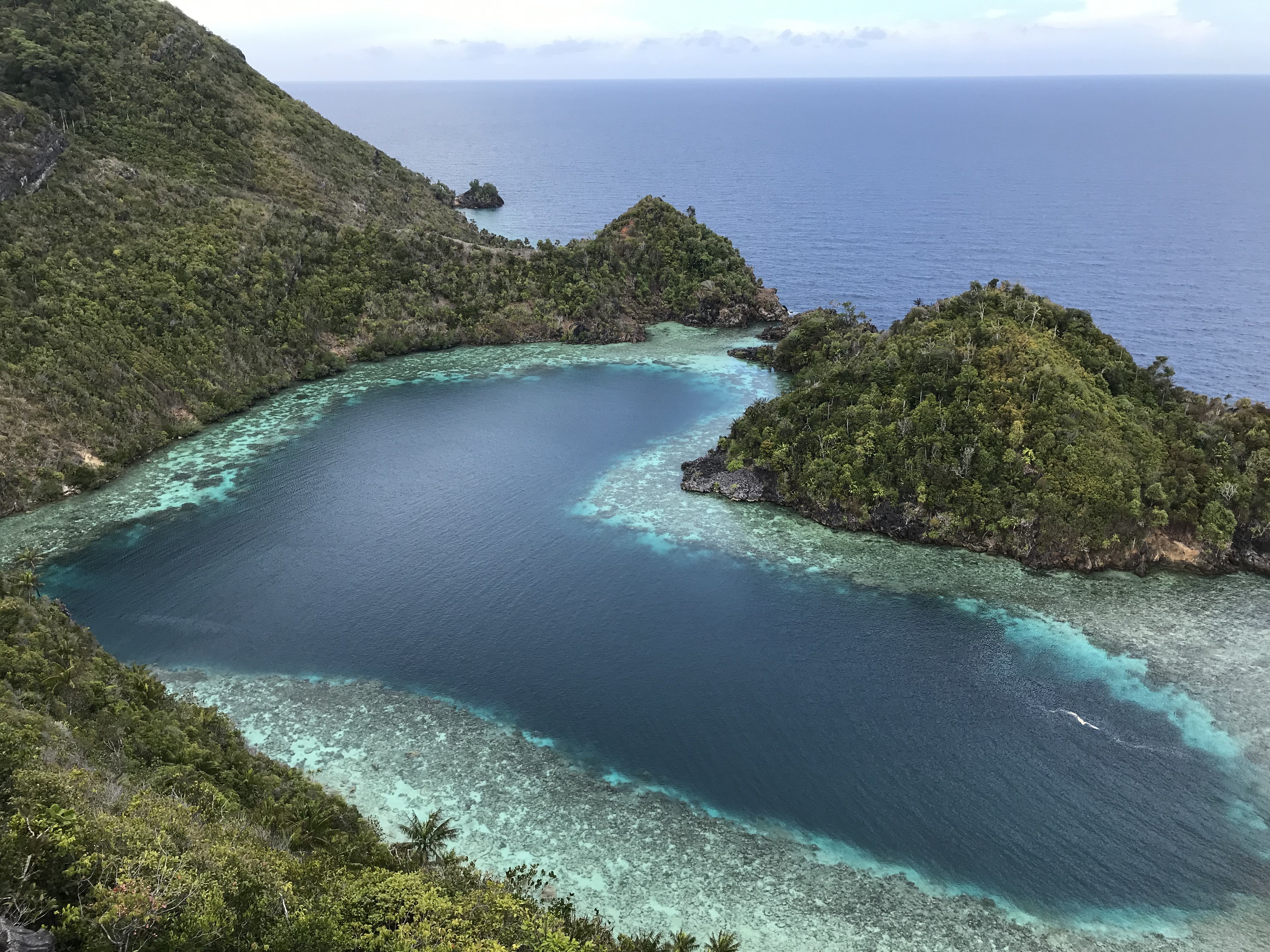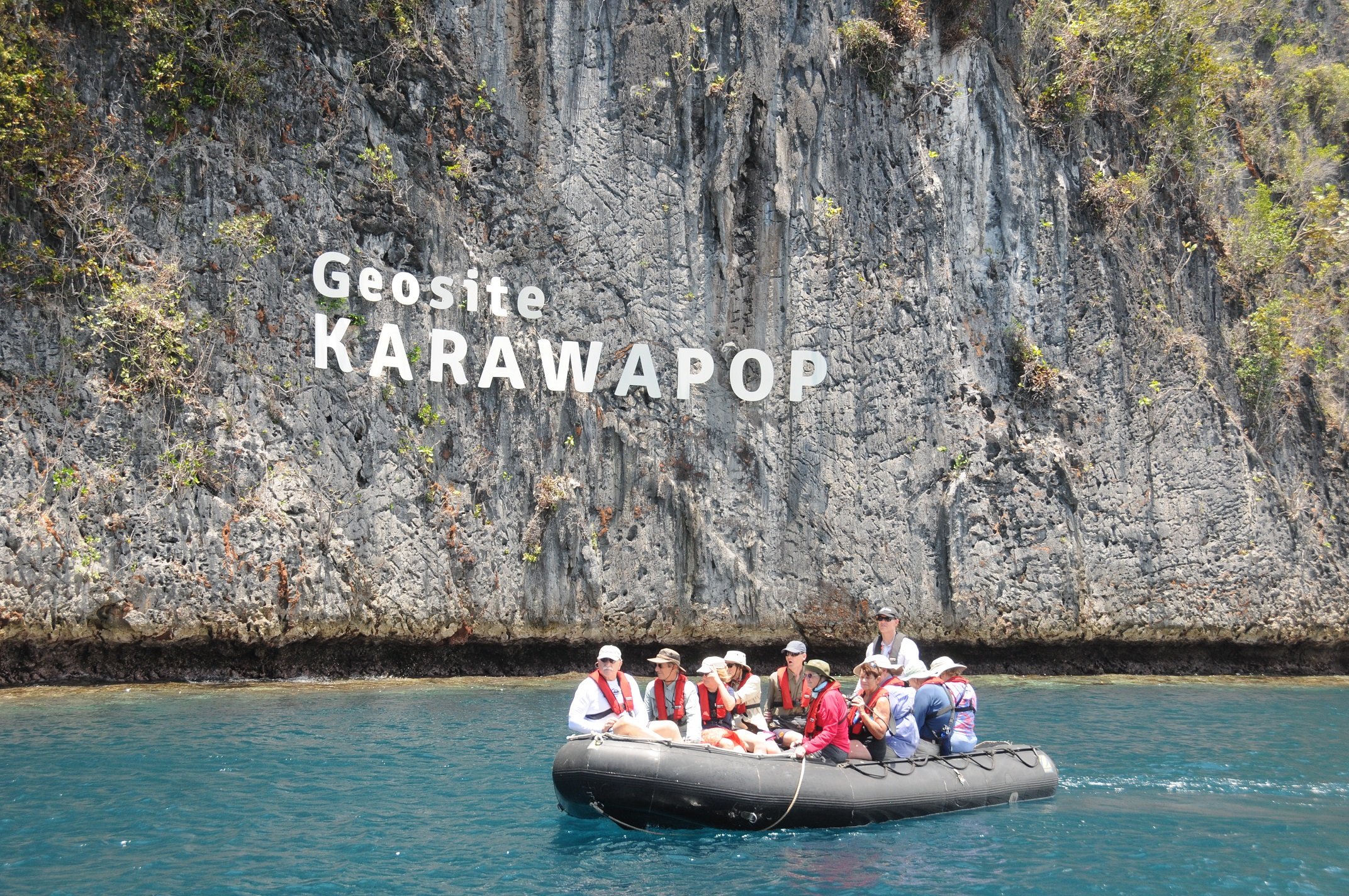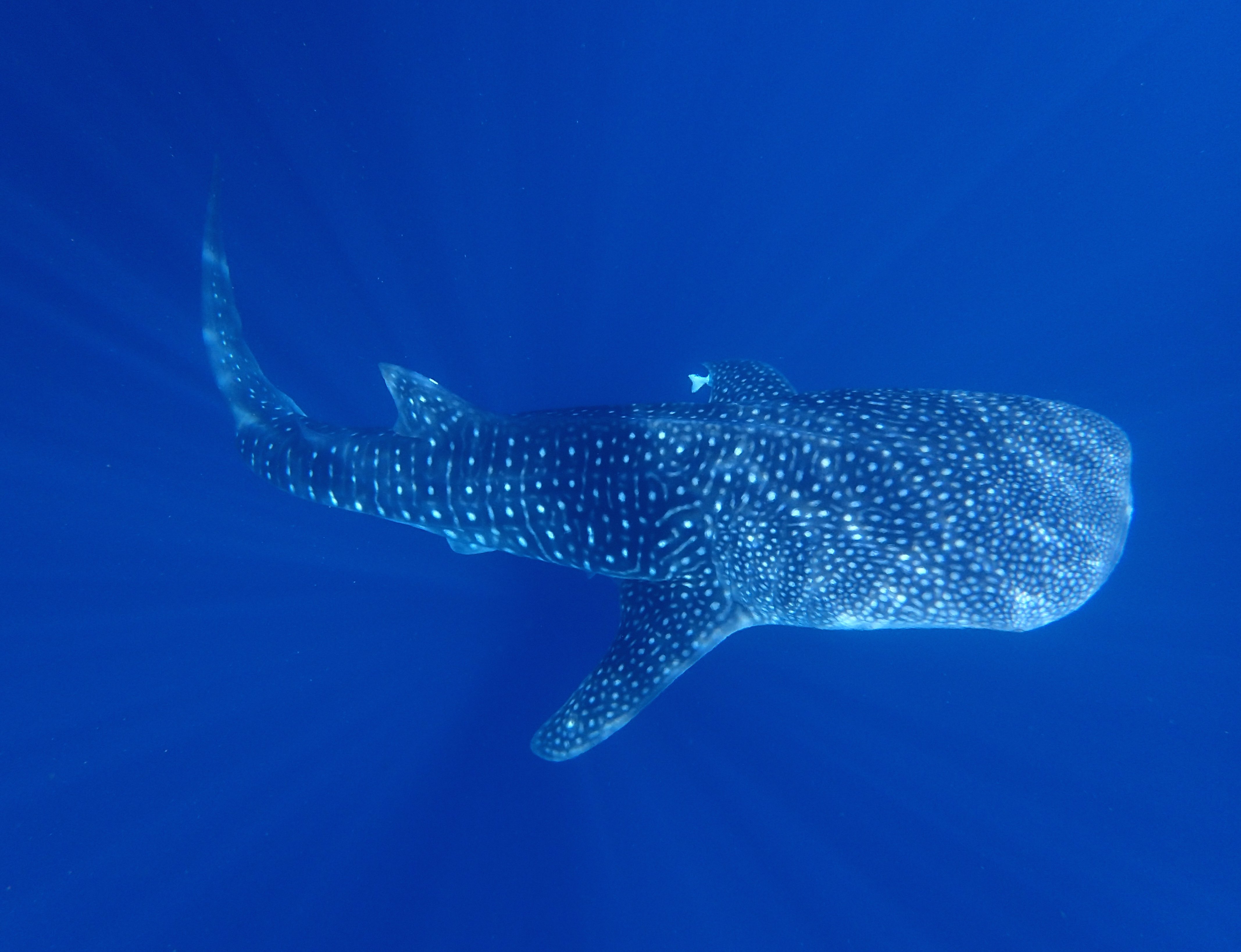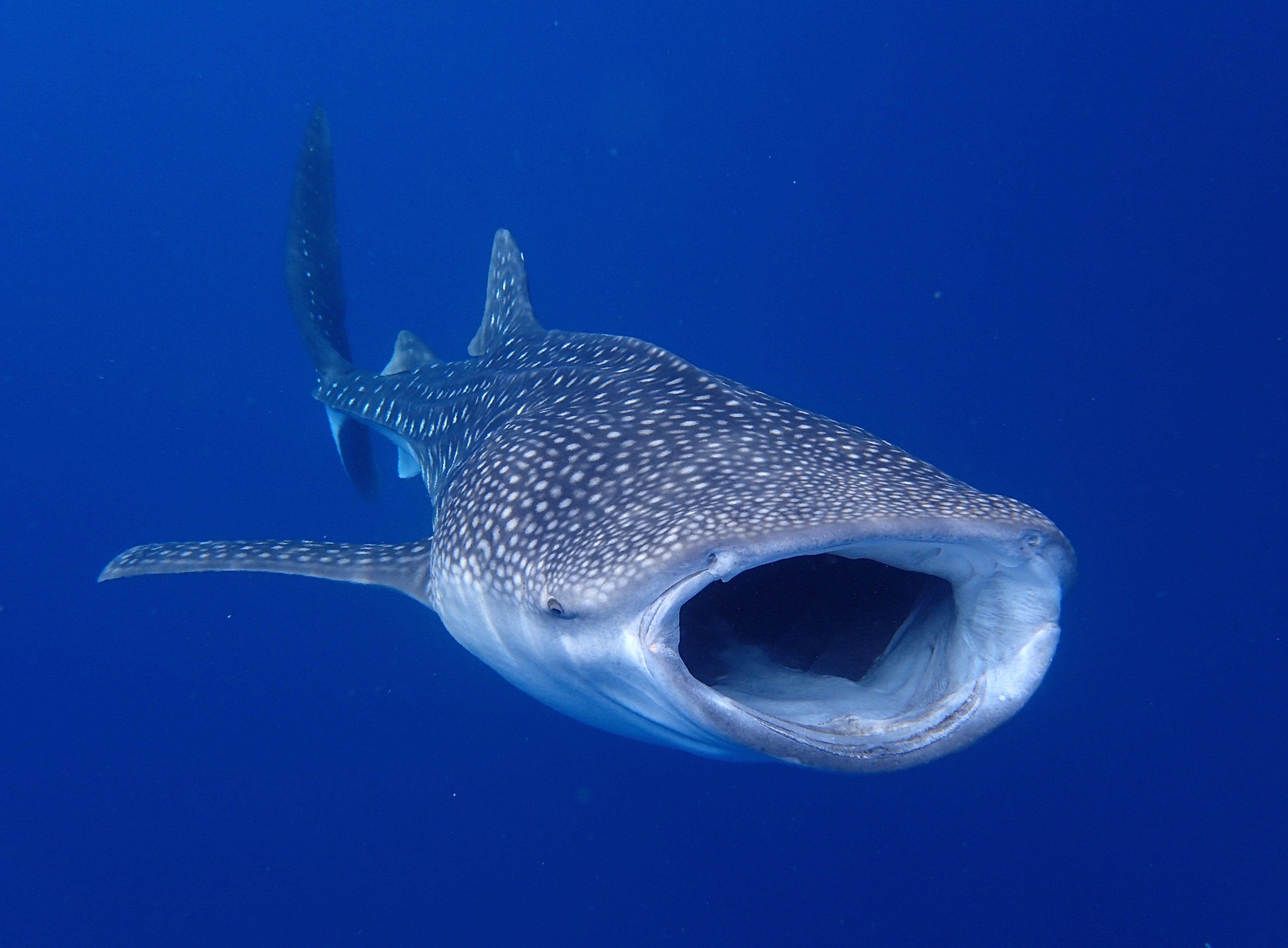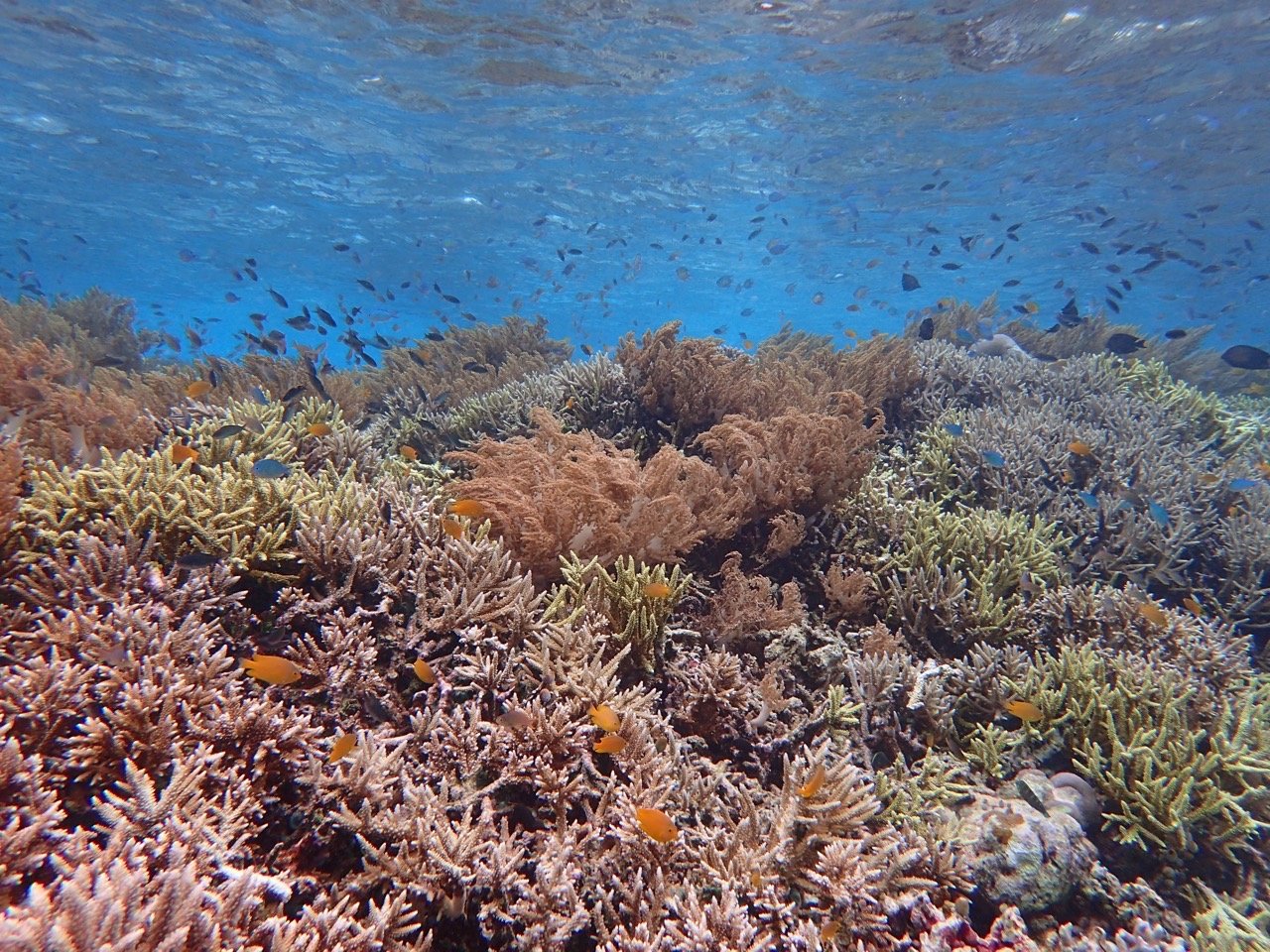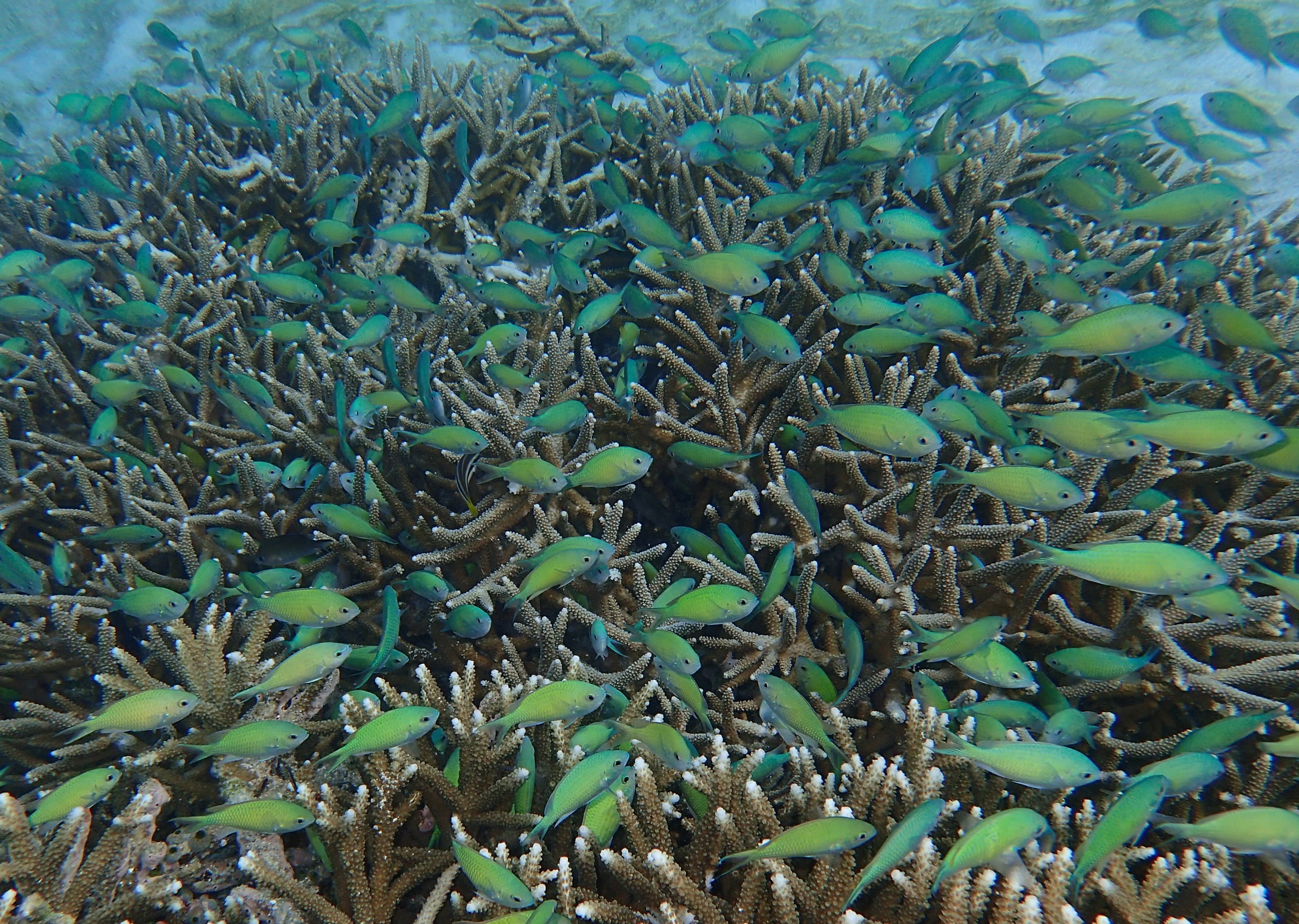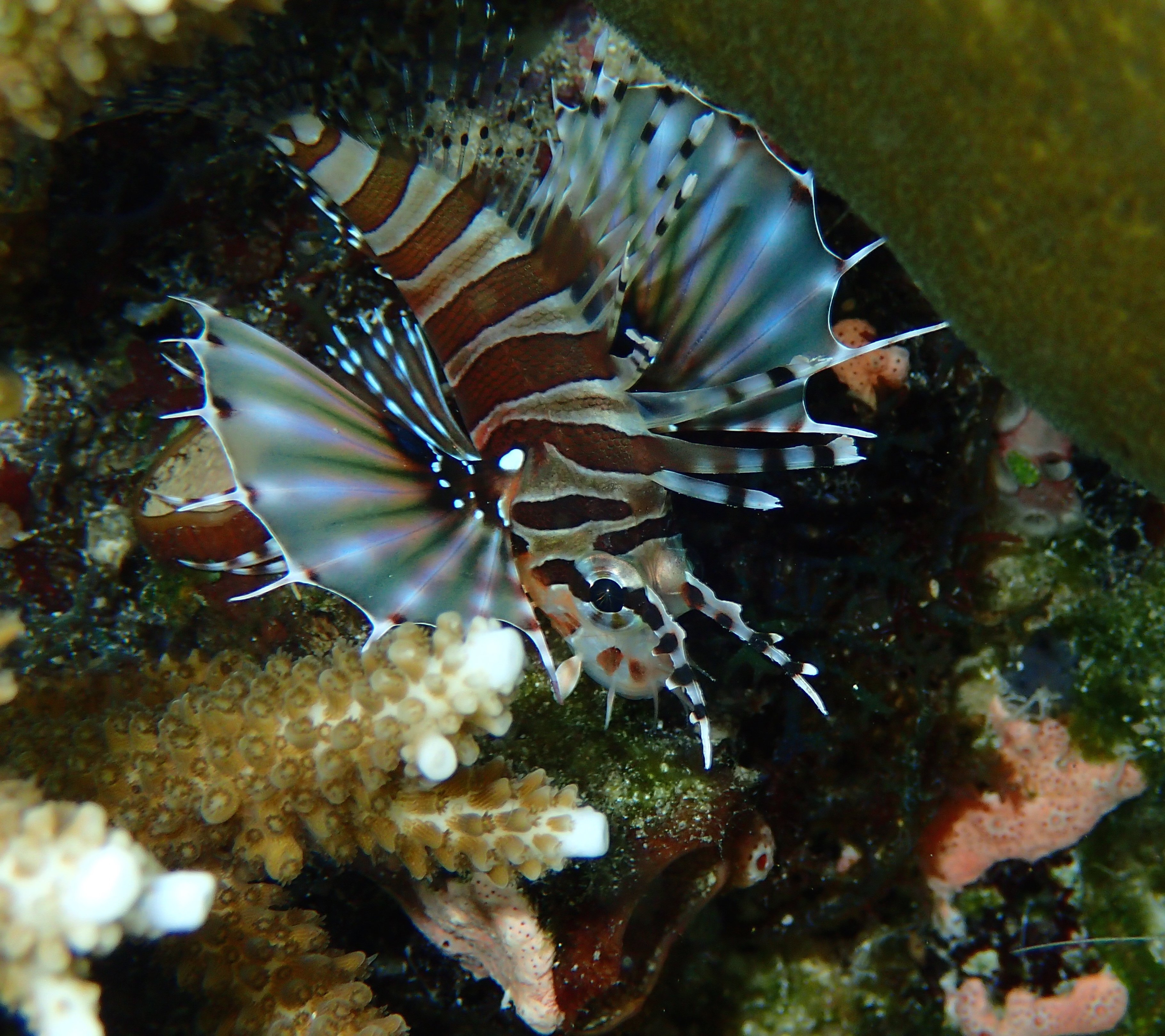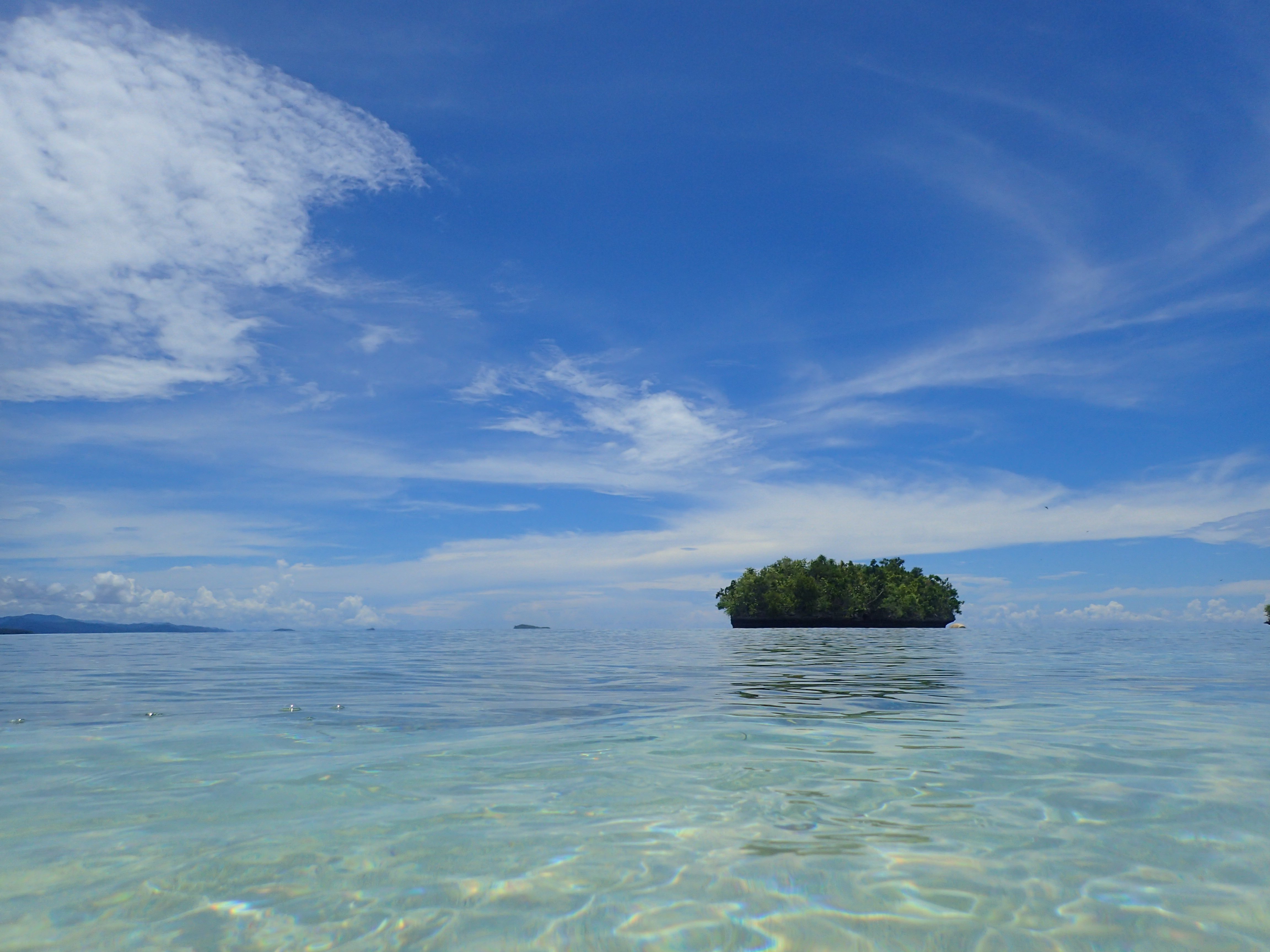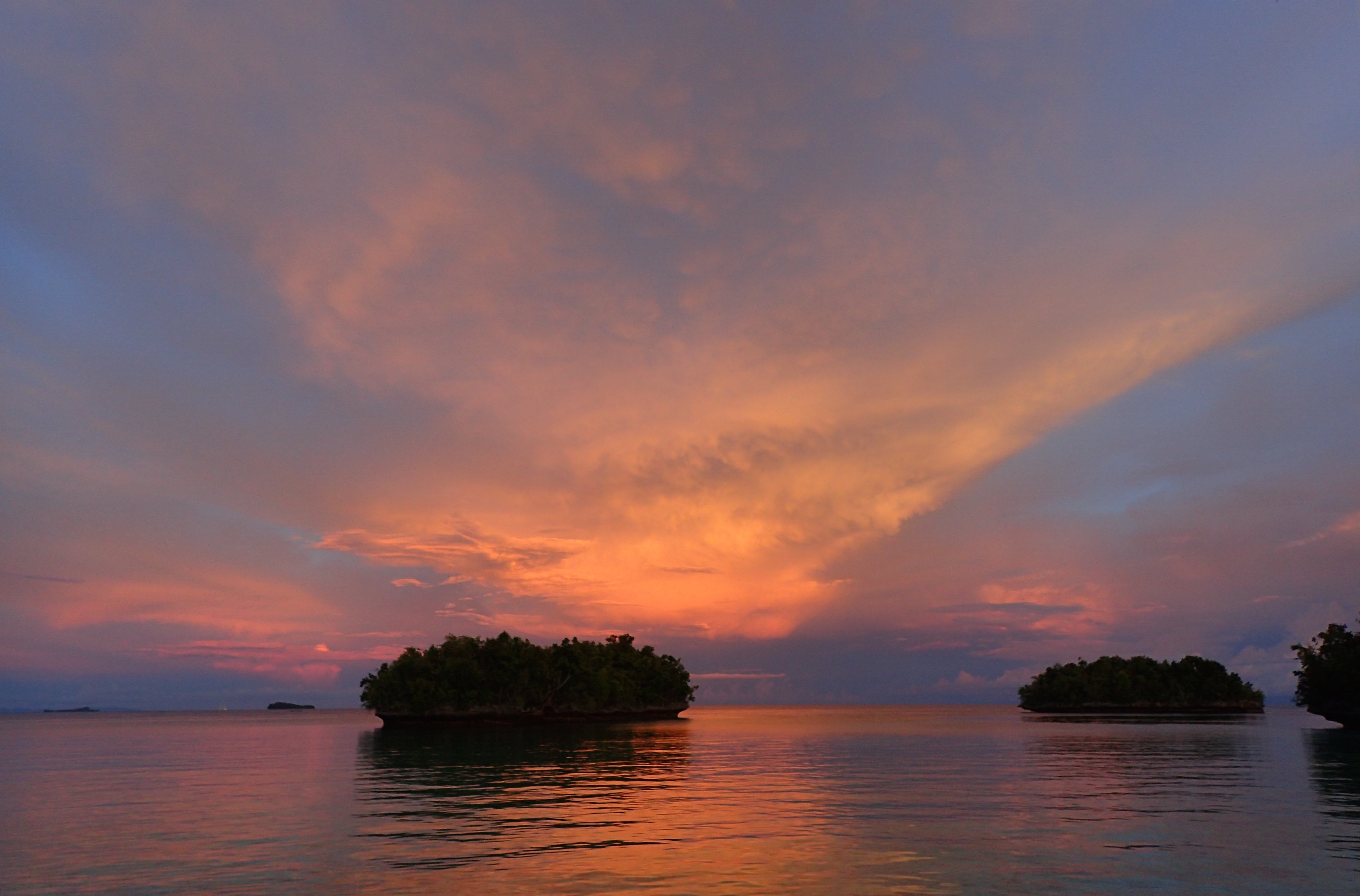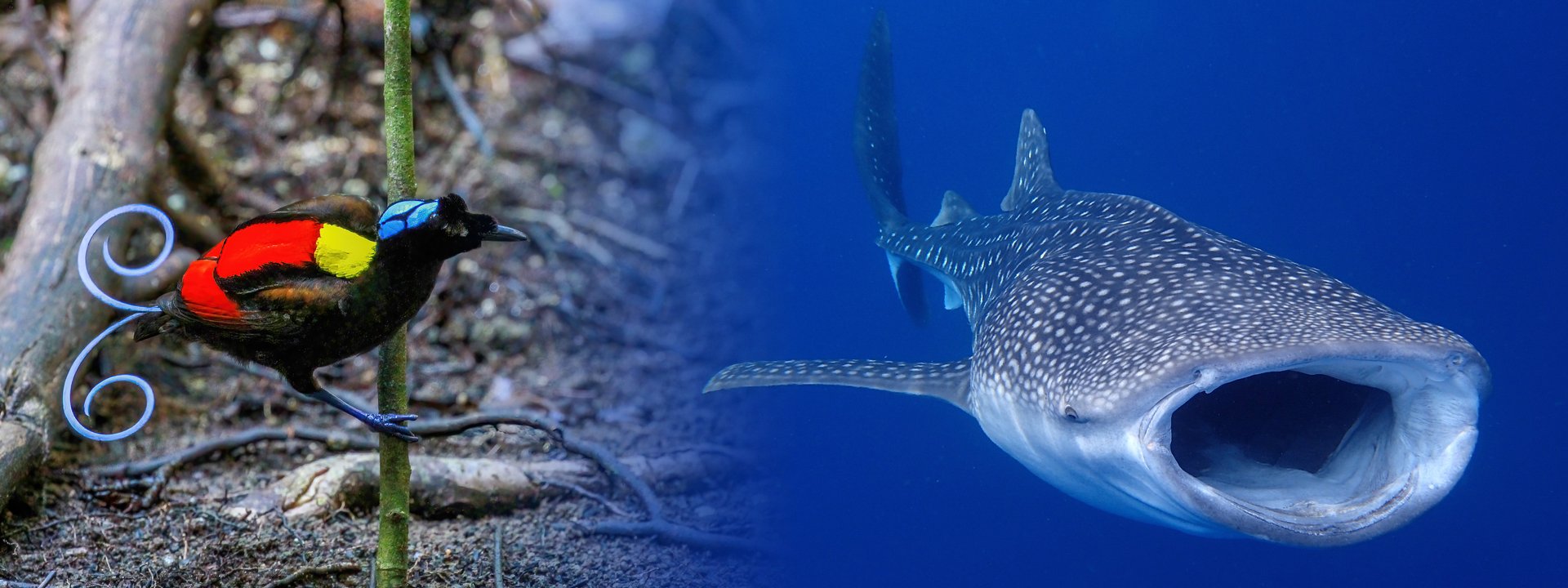"Dragons and BoPs"
"Dragons and BoPs"
Explore Indonesia and New Guinea for Birds-of-Paradise, Komodo Dragons, Whale Sharks, speciality island endemics and all from a comfortable expedition ship
For many birders, when they think of New Guinea, the birds which immediately come to mind are the Birds-of-Paradise, a truly incredible family which unquestionably includes some of the most amazing species on Earth.
On this new expedition cruise, we not only stand a great chance of seeing multiple species, including Red and Wilson's Birds-of-Paradise, but will also spend time exploring some of the richest islands for birds and wildlife in Indonesia including Komodo, home of the incredible Komodo Dragon and endangered Yellow-crested Cockatoo.
Other islands on the itinerary, such as Seram, have multiple endemic birds to look for and the trip will also include an excursion into the Arfak Mountains where more stunning species such as Western Parotia, Vogelkop Bowerbird and the appropriately named Magnificent Bird-of-Paradise can be viewed from some specially located hides.
With the opportunity to also enjoy some of the best snorkelling on the planet, look for Whale Sharks and cruise the world renowned Sepik River, this eighteen day cruise offers some incredible highlights for both the keen birdwatcher and those with wider wildlife interests and all from the comfort of a custom-built expedition ship.
Tour Dates & Prices
Tour Highlights
- cruise from Bali (Indonesia) to Madang (Papua New Guinea) on a comfortable expedition ship
- look for multiple species of birds-of-paradise including Wilson's, Red and Magnificent as well as Western Parotia and Vogelkop Bowerbird
- explore islands rich in localised endemics such as Seram where 33 of its more than 213 bird species are endemic or near endemic and Biak where there are multiple species endemic to the island
- enjoy some of the best snorkelling in the world at Raja Ampat
- visit Komodo Island, the home of the world-famous Komodo Dragon
- look for Whale Sharks at the Cenderawasih Marine Park
- cruise the world renowned Sepik River in Papua New Guinea
Outline Itinerary
Arrive Denpasar, Bali
Explore Bali in the morning. Embark Heritage Adventurer in the afternoon and sail
Sumbawa Island
Komodo Island
Kodia Island
Wakatobi National Park, Sulawesi
Buru Island
Seram Island
Misool Island
Raja Ampat
Manokwari and Arfak Mountains
Cenderawasih Marine Park
Biak and Rusbasbedas Islands
Liki Island
Jayapura
Sepik River
Disembark in Madang
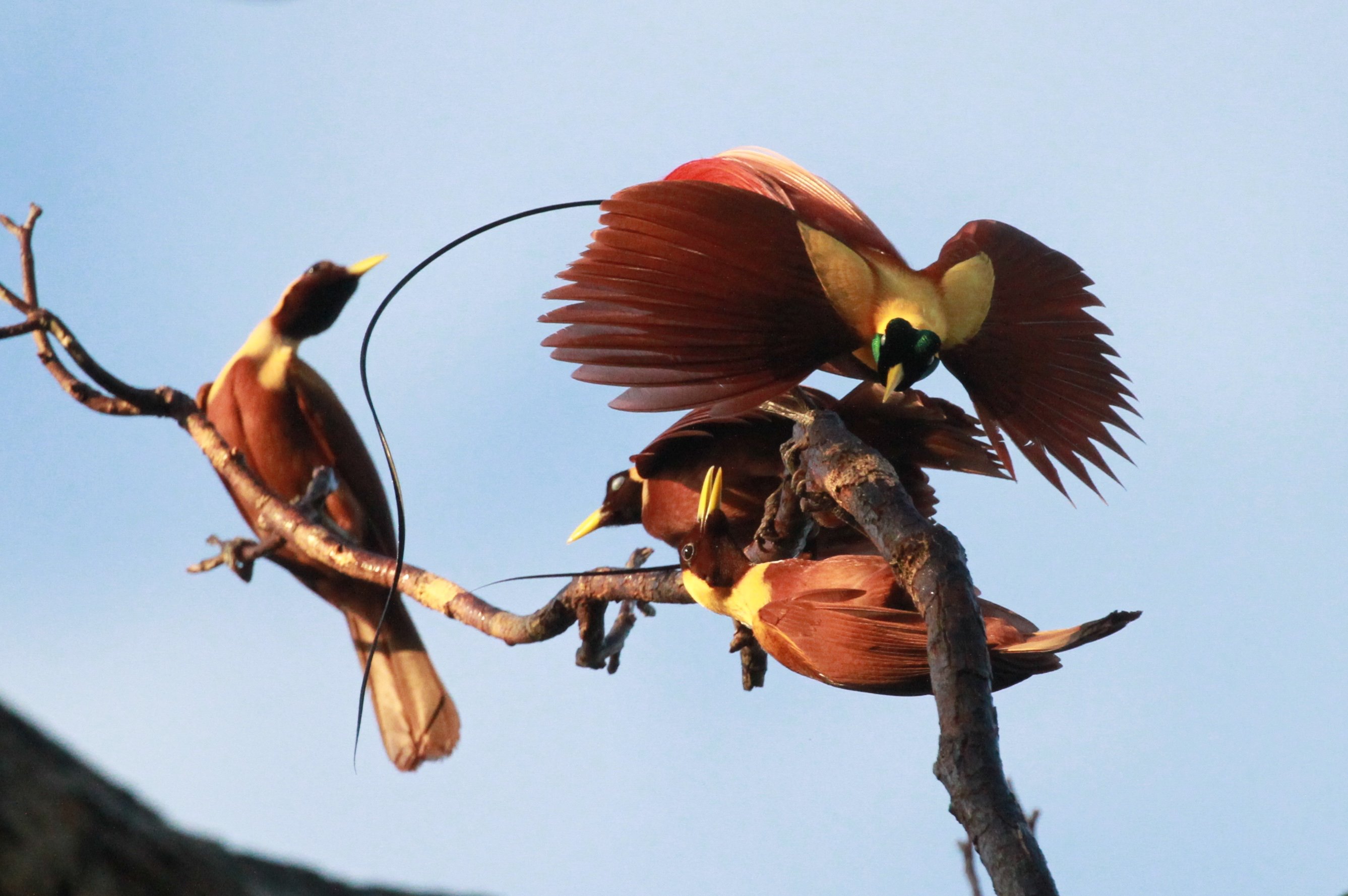
For many birders, New Guinea is synonymous with Birds-of-Paradise and on this amazing cruise, we stand a great chance of seeing a number of members of this extraordinary family including arguably the 'best of the bunch', the stunning Wilson's Bird-of-Paradise. With chances also for Red, Magnificent and several other species as well, the 'BoPs' are likely to be one of many highlights of this special voyage; however, there is plenty more to enjoy on this 16-night expedition voyage.
Boarding Heritage Adventurer on the famous Indonesian island of Bali, the ship will sail eastwards visiting a number of islands in this extraordinary island nation. Some of these, such as Buru and Seram, are home to multiple endemic birds and we will hope to see a good selection of these during our time ashore with the possibilities including Seram Imperial Pigeon, Seram Myzomela, Buru Honeyeater and Buru White-eye.
There will, however, be opportunities to also enjoy some of the other special wildlife of this region and on Komodo Island, for example, one of our priorities will be to see the Komodo Dragon, a dinosaur-like monitor lizard which can grow to up to 10 feet (3 metres) in length!!
Indonesia offers some of the best snorkelling on the planet and even the keenest birder is likely to want to spend some time in the water as the corals and variety of tropical fish are truly mindboggling. The seas around the Raja Ampat islands (off western New Guinea), for example, are believed to contain the most biodiverse marine habitats anywhere and are home to 600 species of hard corals and 1,200 types of reef fish.
Continuing eastwards, the ship will arrive at the huge island of New Guinea which stretches 1,500 miles from end to end. Even to this day, the lush highland forests have not been fully explored and whilst we will be unable to reach the highest peaks, there will be an excursion into the Arfak Mountains which are located on the famous Bird’s Head Peninsula in the northwest of this extraordinary island.
Visiting the Arfak Mountains Nature Reserve gives us a fantastic opportunity to explore higher elevations and the misty tropical montane rainforests have an exceptional suite of endemic birds, animals and plants. During our visit, we will have an opportunity to go to a number of hides where the possibilities include Western Parotia, Vogelkop Bowerbird and the appropriately named Magnificent Bird-of-Paradise.
The next day promises to be very different but equally special with a visit to the Cenderawasih Marine Park where the focus will turn to finding the world's largest fish, the huge Whale Shark. This protected area is regarded as one of the best places in the world to snorkel with these gentle giants, as they sometimes congregate around the local fishermen’s Bagans (handmade floating platforms) hoping to catch some of the smaller fish escaping from the nets.
The following morning, there will be an opportunity to explore Biak Island which has some of the highest levels of avian endemism in the region and we will aim to see a good selection of these with chances for Geelvink Fruit Dove, Biak Paradise Kingfisher, Biak Hooded Pitta, Black-winged Lories and Biak Flycatcher amongst a host of specialities.
The final highlight is likely to be cruising on the mighty Sepik River which is the longest in Papua New Guinea and flows from the highlands into the Bismarck Sea. It is a rich arterial river and we are likely to zodiac cruise along some tributaries where birds such as Papuan (Blyth's) Hornbill and a selection of colourful parrots and lorikeets are likely to be the final highlights of our "Dragons and BoPs" expedition cruise.
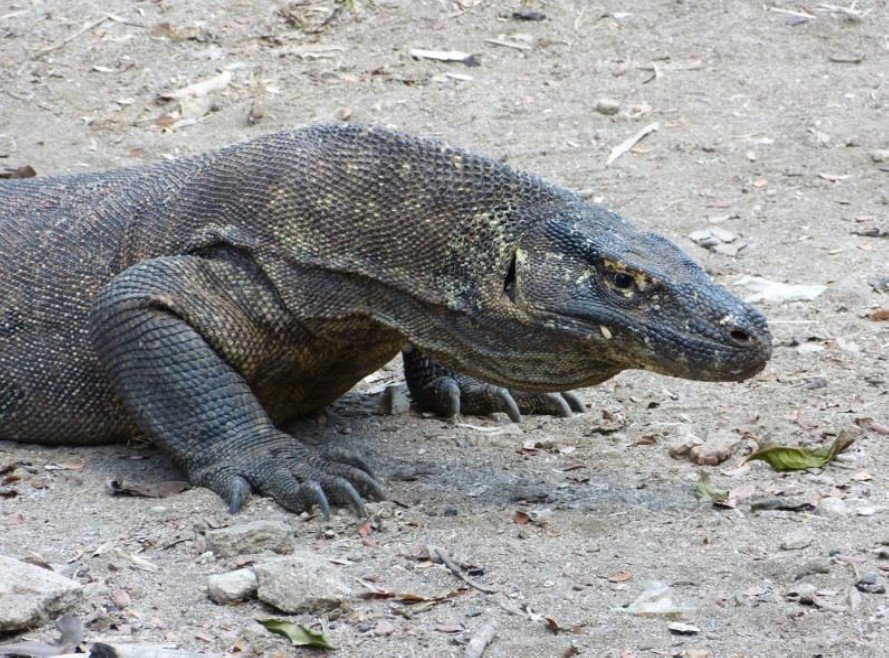
Day 1: Denpasar, Bali
This incredible expedition cruise starts on the Indonesian island of Bali which has captivated the imagination of artists, writers, and travellers for centuries. Transfer to your hotel where you will spend the first night of the expedition with an opportunity to meet your fellow voyagers and some of the expedition guides over dinner at the hotel.
Day 2: Denpasar
Enjoy a leisurely breakfast followed by time to explore the cultural and historical delights of Bali’s capital before board your expedition ship, Heritage Adventurer, in the afternoon. After settling into your cabin, join the Expedition Team on the outer decks as we set sail.
We are likely to encounter our first seabirds of the expedition which could include species such Great Frigatebird, Great Crested Tern, Lesser Crested Tern and Black-naped Tern, as well as both Little Pied and Little Black Cormorants.
Day 3: Sumbawa Island
Lying to the east of the more famous island of Lombok, the mountainous island of Sumbawa blends laid-back island life with spectacular volcanic ridges, terraced rice fields, tangled jungles and beautiful sandy beaches replete with stunning coral reefs and remote bays.
Landing near a local village, there will be an opportunity to learn more about the fascinating culture as well as explore the area for birds and other wildlife.
As this will be our first landing, there should be plenty of new species to see and in more open areas we may, for example, find reasonably widespread birds such as Watercock, Javan Pond Heron and Oriental Dollarbird but will also hope to find our first specialities of the trip which could include Black-naped Fruit-dove, Tenggara Swiftlet, Indonesian Honeyeater, Yellow-spectacled White-eye, Short-tailed Starling, Wallacean Cuckooshrike, Pale-shouldered Cicadabird, Brown-capped Fantail, Black-fronted Flowerpecker, Rusty-breasted Whistler and Golden-rumped Flowerpecker.
Day 4: Komodo National Park
Komodo Island is world famous for the giant monitor lizards, the 'Komodo Dragons', that can be found on the island and getting some good views of these prehistoric-looking reptiles will be our main priority of the morning.
Growing to 10 feet in length and weighing up to 300 pounds, these are the largest lizards in the world and we stand an excellent chance of multiple encounters with these amazing animals. We may also see their favourite prey, the Javan Rusa (or Timor Deer), as we explore as these are reasonably common on the island.
Komodo also has plenty of interesting birds to look for with one of the possibilities being the critically endangered Yellow-crested Cockatoo. Other relatively localised possibilities including Great-billed Heron, Wallacean Drongo, Wallacean Cuckooshrike, Yellow-spectacled White-eye, Flame-breasted Sunbird, Black-fronted Flowerpecker, Sunda Collared Dove, Sunda Pygmy Woodpecker and Orange-footed Scrubfowl, the latter being a "megapode", ie a member of the family of birds that buries their eggs in substantial mounds.
As we sail away from the island, it is worth being out on deck as there are chances for both Indo-Pacific Bottlenose Dolphin and Spinner Dolphin, as well as Bulwer's Petrel, Crested Tern, Bridled Tern and Black-naped Tern.
Day 5: Kodia Island
The small circular island of Kodia (which has a diameter of just over five miles) is located a few miles off the northern coast of the more well-known island of Flores. Although much of the original habitat has been cleared for agriculture, there are still areas of dry forest and we will have an opportunity to explore on what will be a genuine expedition day.
There are plenty of interesting birds to look for and those we could see include Pink-headed Imperial Pigeon, White-rumped Kingfisher, Lemon-bellied White-eye, Spotted Kestrel, White-shouldered Triller and Black-fronted Flowerpecker.
Day 6: Wakatobi National Park
This national park is located off southeast Sulawesi and comprises a series of comparatively small islands and surrounding atolls and reefs. Famously described by legendary underwater explorer and conservationist Jacques Cousteau as an “underwater nirvana”, Wakatobi is home to some breath-taking corals and the main emphasis of the day will be some snorkel excursions to enjoy the amazing marine life which comprises a myriad of corals and tropical fish.
For those wanting to look for birds, one of the main targets will be the Wakatobi White-eye, a highly localised member of this widespread tropical family which is endemic to the small island archipelago off SE Sulawesi. There should be other endemics which are restricted Sulawesi (and nearby islands) and those we could find include Ornate Lorikeet, White-rumped Triller and Grey-sided Flowerpecker. We will also want to check any imperial pigeons we see, as the small island specialist and poorly known Elegant Imperial Pigeon is known from these islands.
Day 7: Buru Island
The rugged and mountainous island of Buru is rarely visited by birders. Despite this, there are ten species which are endemic to the island, as well as a number of other near-endemic species. Whilst some of these are only known for the uplands, others range down to sea-level and those we will look for include Buru Raquet-tail, Spectacled Imperial Pigeon, Buru Green Pigeon, Amboyna Cuckoo-dove, Buru Cuckooshrike, Buru Oriole, Buru Friarbird, Buru (or Black-tipped) Monarch and Buru White-eye.
We will also want to keep an eye out for the critically endangered and extremely poorly known Blue-fronted Lorikeet which has only been seen on a handful of occasions in recent decades. Whilst it is generally thought that this is primarily a montane bird, there is some evidence to suggest that it may also range down to the lowlands.
Day 8: Seram Island
The Moluccan island of Seram is the largest island in the Banda Sea and like Buru is rich in endemics. At least six of the island's 28 species of mammals are endemic and the situation is similar with the birds with Birdlife International considering fourteen species as endemic to this EBA (endemic bird area).
We plan to leave the ship early in the morning and will drive inland along a road which allows us to gain some elevation to look for a range of species. Although some of the endemics such as the Seram Masked Owl are extremely poorly known, others are more numerous and we stand a chance of finding Seram Imperial Pigeon, Seram Golden Bulbul, Seram Oriole, Seram Friarbird, Long-crested Myna, Ashy Flowerpecker and Seram White-eye with other possibilities including Seram Mountain Pigeon, Lazuli Kingfisher, Yellow-throated Whistler, Turquoise Flycatcher, Wakola Myzomela and Violet Crow amongst a host of localised species.
Day 9: Misool Island
Misool is the second largest island in the Raja Ampat archipelago and offers some stunning snorkelling opportunities where it is possible to find species such as Bumphead Parrotfish, Clownfish, Manta Rays, Ghost Pipefish, Harlequin Shrimp, Pygmy Seahorse as well as some spectacular coral reefs. Whilst we would be extremely fortunate to encounter one, Dugong can also be found here.
There should also be an opportunity to explore the forests of this rich island and there are a number of species we are unlikely to have encountered so far which we may find including Ivory-billed Coucal, Yellow-billed Kingfisher, Wompoo, Orange-fronted and Dwarf Fruit Doves, Great-billed Parrot, Yellow-capped Pygmy Parrot, Frilled Monarch and Lowland Peltops.
This is the first of our landings where we could find birds-of-paradise with the spectacular King Bird-of-Paradise known from the island. Seeing this diminutive bird, however, requires good fortune indeed. Lesser Bird-of-Paradise and Glossy-mantled Manucode also occur.
For those with wider interests, there will also be an opportunity to hike to some caves in the forest where the rock art dates back more than 5,000 years and hike to viewing platforms for stunning views.
Days 10-11: Raja Ampat
Lapped by stunning turquoise waters, Raja Ampat’s collection of 1,500 tiny, jungle-cloaked islands are among Indonesia’s most beautiful and we have two days scheduled to explore this unique part of the country.
For birders, some of these islands are extremely special as two highly localised birds-of-paradise can be found here, Red Bird-of-Paradise and Wilson's Bird-of-Paradise, with the latter widely regarded as one of the most beautiful birds in the world. With the males having red, yellow and black plumage, a blue cap and an extraordinary, curled tail, it is difficult to disagree with this assessment!!
Very early starts will be required to maximise our chances of seeing these special birds and whilst the "Red BoPs" have leks in traditional trees, "Wilson's BoP" predominantly displays on the ground so we may have to use some carefully located blinds to have a chance of seeing this gorgeous bird.
There are plenty of other speciality birds which occur here and those we could find include Moluccan King Parrot, Rufous-bellied Kookaburra, and Common Paradise Kingfishers, as well as Golden and Frilled Monarchs, Rusty Mouse-warbler and Olive-crowned Flowerpecker. If we are extremely fortunate, we could even find the huge Western Crowned Pigeon, Eastern Hooded Pitta (a split from Hooded) and Raja Ampat Pitohui.
With the waters around Raja Ampat considered to be the most biodiverse marine habitat on the planet, this will be another occasion when even the keenest birder will probably want to spend some time snorkelling, as the seas are truly beyond words with 600 species of hard coral and 1,200 types of reef fish known to occur in the area.
Day 12: Manokwari and Arfak Mountains
Located at the top of the Bird’s Head Peninsula and surrounded by lush rolling hills and the impressive spine of the Arfak Mountains, Manokwari is the capital of West Papua. We plan to leave the ship well before dawn and travel high into the mountains to visit the Arfak Mountains Nature Reserve. This will give is an opportunity to explore the higher elevations and misty tropical montane rainforests where there are an exceptional number of endemic plants, animals and birds.
There are several viewing hides and three of the special birds which we hope to find are Western Parotia, Vogelkop Bowerbird and the appropriately named Magnificent Bird-of-Paradise. There is a diversity of other species in the area, in particular several species of parrot, cuckooshrikes, kingfishers, honeyeaters and berrypeckers.
Day 13: Cenderawasih Marine Park
Our main goal for the day is to have the opportunity to swim with Whale Sharks and Kwatisore Bay in Cenderawasih Marine Park is considered one of the best places in the world to snorkel with these gentle giants.
Occasionally growing to over 12 metres in length, this species is the largest of the world's sharks, however, unlike some of their more notorious cousins, they are not a threat to humans as they gather around the local fishermen’s Bagans (floating platforms) hoping to catch some of the smaller fish escaping from the nets.
With these enormous fish often utterly engrossed in getting an easy meal, there can be great opportunities for some close encounters.
Cenderawasih Marine Park is, however, also home to some of the finest coral reefs in the world and there will an opportunity for further snorkelling as well as going ashore to explore around a local village.
Day 14: Biak and Rusbasbedas Islands
The seldom-visited island of Biak is part of a small archipelago (which are often known as the Geelvink Islands) which are 75 miles off the coast of New Guinea. This 'Endemic Bird Area' is considered to have the highest level of endemic avifauna of any of New Guinea's satellite islands with 19 endemic subspecies and a dozen or so full endemics.
We plan to spend the morning ashore on Biak where the endemic possibilities include Biak Scrubfowl, Biak Coucal, Black-winged Lory, Biak Paradise-Kingfisher, Biak Flycatcher, Biak Triller and Long-tailed Starling.
During the heat of the day, the ship will then sail across to the pristine and isolated Rusbasbedas Island where there are some stunning corals making it a paradise for snorkellers. For those wanting to continue birding, however, there will be opportunities to go exploring on this rarely visited island.
Day 15: Liki Island
The small island of Liki is less than 4 miles from one end to the other and like many of the other locations on our itinerary is rarely visited by outsiders.
The island still has extensive forest cover and we will have an opportunity to explore and could well make some important birding discoveries. There will also be an opportunity to snorkel as there is a coral reef we will be able to visit.
Day 16: Jayapura
Our last landing in Indonesia will be at the town of Jayapura where there will be an opportunity for a morning visit to Lake Sentani. This substantial natural lake has a surface area of 40 square miles and is located at the bottom of the Cyclops Mountains.
We will use traditional longboats to explore, passing stilt houses and impressive scenery and whilst the morning will primarily have a cultural focus, there should be the chance to see some birds with the possibilities including White-bellied Sea-Eagle, Rufous-bellied Kookaburra, Glossy-mantled Manucode, Golden-faced Myna, Hooded and Grand Munia, and with luck, Fawn-breasted Bowerbird.
We will return to the ship for lunch and then sail towards Vanimo for our international arrival into Papua New Guinea with the possibility to look for seabirds as we travel eastwards. The seabed drops away quite rapidly along this part of the coast so there could be a chance of some unexpected sightings as the water should be deep enough for more interesting pelagic seabirds and also the chance of some deep-water cetaceans.
Day 17: Sepik River, Papua New Guinea
The Sepik River is the longest river in Papua New Guinea and is navigable for a considerable distance. The region is well known for the wooden sculptures and other artwork that are produced by the numerous tribal artists who live along the banks of this mighty river, however, it is also home to some great wildlife and we plan to use the ship's zodiacs to explore tributaries and channels off the main arterial river.
There are plenty of species to look for and those we could find include Orange-fronted Fruit Dove, Orange-bellied Fruit Dove, Pinon's Imperial Pigeon, Papuan Hornbill, Red-cheeked Parrot, Eclectus Parrot, Papuan Spinetailed Swift and Singing Starling.
We also plan to visit the village of Kopar where we will experience village life and a traditional Dragon Dance which is unique to this region.
Day 18: Madang - Port Moresby
Madang is the self-appointed ‘Prettiest Town in the South Pacific’ and this is where our expedition cruise will end with disembarkation after breakfast from where it is possible to fly to Port Moresby and then onward to your home.
There are, however, plenty of options for further exploration in Papua New Guinea including, for example, Varirata National Park which is only about 90 minutes from Port Moresby. This excellent park offers possibilities to see a very good selection of species which will not be seen on the expedition cruise including two 'BoPs': Raggiana Bird-of-Paradise and Growling Riflebird.
Note: During our voyage, circumstances may make it necessary or desirable to deviate from the proposed itinerary. This can include poor weather and/or opportunities for making unplanned excursions. Your Expedition Leader will keep you fully informed.
Pre-tour Extension: Bali
Subject to numbers, we plan to organise a short pre-cruise extension on Bali where the primary objective is to look for the highly endangered Bali Starling as well as other specialities. Please contact us if you would be interested in participating in this.
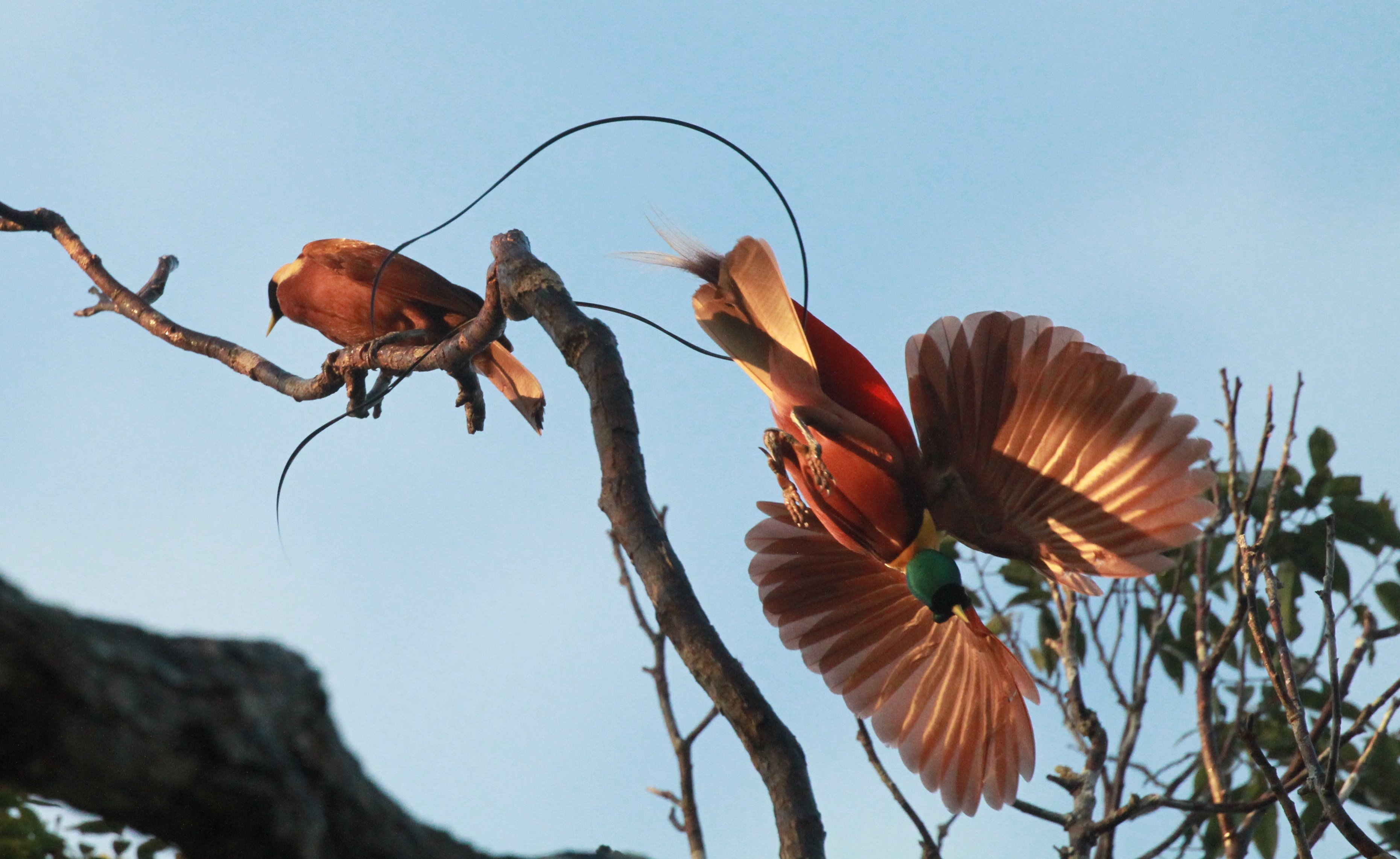
THE SHIP
Heritage Adventurer is a purpose built expedition ship (which was previously known as Hanseatic and Resolute) which offers extremely comfortable cabins and passenger facilities.
Originally designed to accommodate 184 guests, Heritage Adventurer will carrry a maximum of 140 expeditioners ensuring spacious, stylish and comfortable voyages. There will be a fleet of 14 zodiacs to ensure all guests are able to maximise on their expedition adventure.
CABINS OPTIONS AND PRICES - 2023
Main Deck Triple - 2023: £8,425 per person
Main Deck Triple Cabins on Deck 3 are a spacious 22m2 and feature two porthole windows, two single beds and one Pullman bed which folds down from the wall, comfortable lounge, writing desk, private en-suite with shower, ample storage and a flat screen entertainment system.
Superior Triple - 2023: £9,125 per person
Superior Triple Cabins on Deck 5 are a spacious 22m2 and feature large panoramic windows, two single beds and one Pullman bed which folds down from the wall, comfortable lounge, writing desk, private en-suite with shower, ample storage and a flat screen entertainment system.
Deck 4 Superior - 2023: £10,000 per person
Superior Cabins on Deck 4 are a spacious 22m2 and feature large panoramic windows, king or two single beds, comfortable lounge, writing desk, private en-suite with shower, ample storage and a flat screen entertainment system.
Deck 5 Superior - 2023: £10,550 per person
Superior Cabins on Deck 5 are a spacious 22m2 and feature large panoramic windows, king or two single beds, comfortable lounge, writing desk, private en-suite with shower, ample storage and a flat screen entertainment system.
Main Deck Single - 2023: £13,400 per person
Main Deck Single Cabins on Deck 3 are a spacious 22m2 and feature two porthole windows, king bed, comfortable lounge, writing desk, private en-suite with shower, ample storage and a flat screen entertainment system.
Superior Single - 2023: £13,675 per person
Superior Single Cabins on Deck 5 are a spacious 22m2 and feature large panoramic windows, king bed, comfortable lounge, writing desk, private en-suite with shower, ample storage and a flat screen entertainment system.
Worsley Suite - 2023: £13,675 per person
Located on Deck 6, Worsley Suites are a spacious 22m2 and feature large panoramic windows, king or two single beds, comfortable chaise-style lounge suite, writing desk, private en-suite with shower, ample storage and a flat screen entertainment system.
Heritage Suite - 2023: £18,225 per person
Located on Deck 6, Heritage Suites are an expansive 44m2 and feature large double panoramic windows, king bed, large living area with a sofa, coffee table and chairs and grand marble bathroom with a double basin, bathtub and shower, large writing desk, floor to ceiling cabinetry for storage and a flat screen entertainment system.
Please note: the above prices are per person and include landing fees.
Tour Gallery
View a gallery of images for this tour below, click on an image to view as full size with caption
